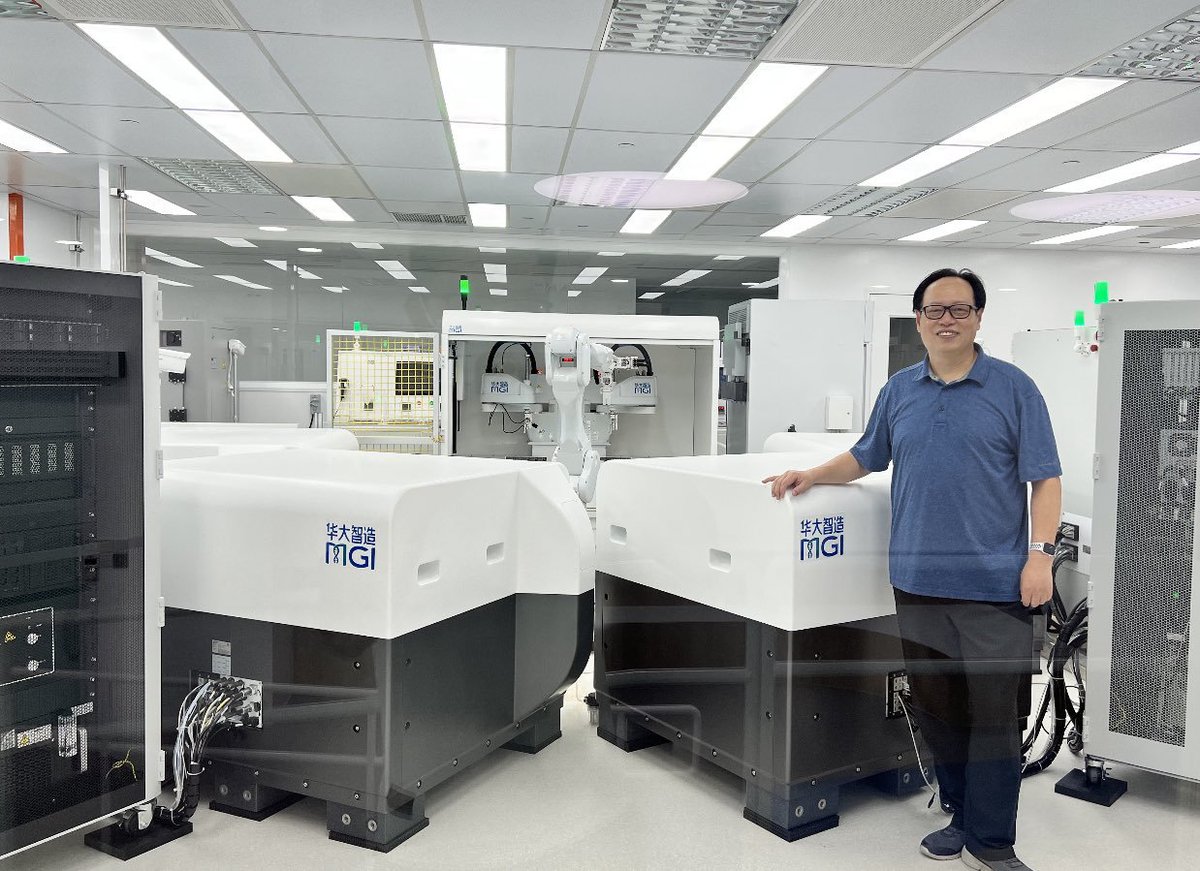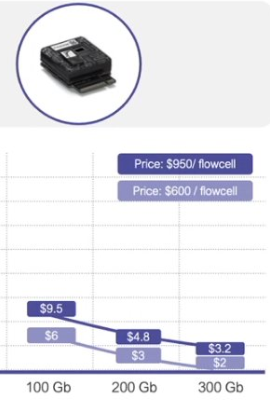A LinkedIn post by Sarah Hartley-Kane on the UK becoming the 'Silicon Valley of Global Genomics' linkedin.com/posts/sarahhk_… 

The cost of a whole genome is probably already in the $100 mark, but not widely available: the only companies that have shown realistic goals towards the $100 genome are: MGI Tech with their DNBSEQ-T7 and T10x4 large instruments, together with @UltimaGenomics with their U100 ... 

which is expected to be commercially available in 2023 and produces $1/Gb reads (albeit short-reads with homopolymer noise), and $ONT.L Oxford @nanopore, which is currently closing into the $2/Gb mark of Q20+ single pass reads on the PromethION flowcells 

So how far are we from the $100 Genome and who is closer? By the looks of it, MGI Tech is the closest to dethrone $ILMN Illumina in producing 2x150bp Q30 short-reads at $1/Gb, but it will take time for them to be commercially available worldwide with the T7/T10x4 sequencers. 

Then @UltimaGenomics is probably the closest to be able to produce $1/Gb short-reads, and sell them as part of $1-3M+ sequencing factory setups, initially in the US then later in other territories. These $1/Gb short-reads are single-end and have homopolymers issues. 

Finally, $ONT.L Oxford @nanopore is in the $6-2/Gb range now with their PromethION line, and have been previously criticized for the low basecalling quality of their single-pass reads, but since Kit14 became available 4-6 weeks ago, the status quo has changed: it is now ... 

... a new reality that Kit14 can produce consistently $4-3/Gb runs of Q20+ single-pass reads, which for human genome sequencing could mean a 20x QV50+ (consensus) for 99% of the genome. That still is not $1/Gb Q30 long-reads mark, but at the same time one can get there with ...
... a much lower CAPEX starting point, with the P2/P2 Solo now putting NovaSeq levels of $/Gb with a CAPEX of a fraction of a mid-throughput sequencer (NextSeq/AVITI/G4/G400) 

So all in all, the $100 Genome is closer than many people think, and it will change the way we understand the field of #genomics and #multiomics, both in scientific terms but also in market share terms. 

More on #NGS at bit.ly/ngs-slides
• • •
Missing some Tweet in this thread? You can try to
force a refresh











